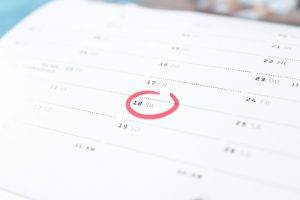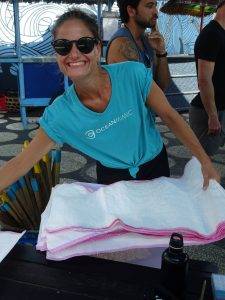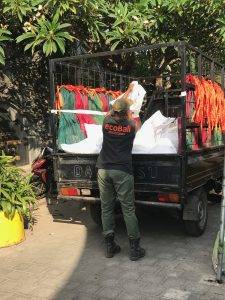You’re a smart cookie. You’ve been paying attention. You know that plastics and other trash entering our oceans are a serious problem. So being the awesome human that you are, you’re ready to start planning a cleanup – an excellent way to stop trash entering the ocean and raise awareness at the same time!
Not quite sure where to start? A key part of Ocean Mimic’s work is organising cleanups, so we have lots of experience to share. We’re here to help. Below are our top tips for planning a cleanup.
1) Pick your spot
Choosing the location is a vital first step when planning a cleanup. Maybe it’s your favourite beach or the local creek mouth. Wherever you choose, make sure it’s safe and accessible, and that you’re allowed to be there (different local authorities have different rules about accessing public spaces).
Also think about how dirty the beach is and how easy it will be to gather people there. The dirtiest beach may be too out of reach for people to get to and the most popular beach may be clean. It is all about finding a good balance between spreading the most awareness (amount of people) and making the most direct environmental impact (trash collected).
2) Pick a date and time
Carefully planning the date and time for your event is key. Be sure to consider the tides charts for your area. Ideally you want to hold a clean-up at low tide. You also want your volunteers to be as comfortable and as safe as possible so aim for the coolest parts of the day (mornings and afternoons).
When picking a date aim for a few weeks, or even a month into the future – remember that you’ll need time to organise your equipment and trash collections and give people enough notice to take part.

3) Plan the layout
Visit your cleanup location and make notes on how you’re going to layout the event:
- Where are you going to meet other members of your cleanup crew? If the beach is long, pick one end of the beach or an easily recognised landmark to meet up with everyone.
- Where will you give your briefing? Is this the same as the meet up point or somewhere different? This will likely also be the point where volunteers register and get more information (e.g. flyers and fact sheets), where you hand out collection bags, where you keep the first aid kit and maybe even where you provide a water refill station, so make sure the spot is suitable, and if possible protected from the sun (or the rain).
- Where will the trash collection point be? This is where volunteers leave their full trash bags – try to make this spot easily accessible for them (the bags can get heavy!), as well as those that will be taking the trash away.
4) Get your equipment together
Every event is a little bit different and will need various bits and pieces. To make sure things run smoothly on the day, prepare your equipment prior to your event. In our experience, the following materials are useful but not all essential for cleanups:
- Stationery – pens, pencils, clipboards
- Registration forms
- Gloves – even if you ask volunteers to bring their own gloves, it’s wise to have some spares
- Cutters and scissors
- Trash bags – try to use reusable bags such as rice or hessian sacks
- Drinking water
- Camera/phone to document the event
- Hazardous waste container e.g. empty liquid detergent bottle with lid (for sharp materials e.g. cut glass/needles) clearly labelled
- Data collection forms
- Weighing scales
- First aid kit
- Flyers and fact sheets on the plastics issue, recycling in the local area or upcoming events
- Your briefing notes

5) Work out how the trash will be collected
After you’ve collected all that trash, you’re going to need to get it off the beach. Before your cleanup work out how the trash is going to be collected. Can the local government or recycling centre help? Maybe there’s a regular collection in the area that will be able to pick up the trash, maybe a friend can take the trash to the local recycling plant. It’s important to confirm this before the cleanup. At Ocean Mimic we are continually trying to improve how our cleanup waste is recycled and reused, read all about our latest efforts here.

6) Let the world know it’s happening
With beach cleanups it’s often a case of the more people the better. There are a million and one ways you can promote your cleanup event – everything from social media posts, posters, websites, emails and just talking to people. We’ve covered all of these and more in our blog.
However you decide to spread the word, remember that everyone is busy with, well everything – the more notice you can give the better.
All that’s left now is to say good luck!
Congratulations on being part of the solution and making a difference!
When it’s all done and dusted, we’re keen to know how you went. Let us know how many people attended? How much trash you collected? What was the weirdest piece of trash picked up? Do you have any hints and tips for other cleanup coordinators? If you haven’t already, please join and share in our Cleanup Leaders Facebook Group!



This Post Has One Comment
They are good, I’m happy to add knowledge through this campaign, thanks.
Comments are closed.